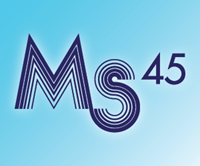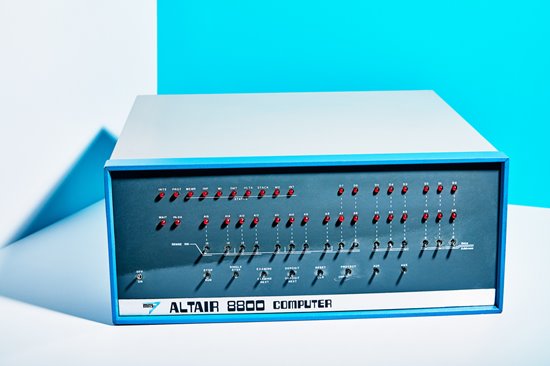By Aaron A.
[How Microsoft Changed The World - Part 1, Part 2, Part 3, Part 4 --- A full list of MS@45 content, resources and the schedule for our online experiences on the weekend of April 4-5 can be found here. Join in the celebration with us! #MSFT45]

As with many start-ups, Microsoft began as a single idea for a single product. The product in question: a BASIC language interpreter for the just-released Altair 8800.
The Altair was a $400 do-it-yourself computer kit announced at the end of 1974. It was more project than product, a master class in soldering and in frustration; an excuse to hole-up in a workshop and ignore the family. It was hard to assemble. It contained no screen and no keyboard, just rows of lights and switches contained in a blue schlocky box. But for Paul Allen and Bill Gates—two friends, collaborators, and serial business partners who first bonded over shared passions for computing at Seattle’s prestigious Lakeside High School—the Altair meant opportunity (as it would for dozens of other young men [more on that in a future post, I promise] who created their own start-ups in what became the personal computer industry).
Altair BASIC—a piece of software that allows users to write computer programs in the easy-to-learn computer language BASIC—gave the bare-bones Altair utility. It was a need and Microsoft filled it. It was Bill Gates’ insistence that he and Allen would retain rights to license their work that proved revolutionary.
Software (the instructions that tell a computer what to do) has
always been essential. Programming’s earliest pioneers in the United States, Great Britain, and elsewhere recognized software’s importance from the start as they crafted the time-saving shortcuts that set the art of programming on its path to becoming a profession.
By the late 1950s, computer hardware manufacturers often provided software as part of the lease of the computer hardware (or, if the system was purchased outright, with ongoing service agreements). On college campuses (and among user groups like IBM’s SHARE), programs were distributed in a spirit of learning and community and professional development for little more than the cost of the media, if money exchange hands at all.
Software, like water, had no fixed price, but it maintained infinite value. It’s not that people did not get paid to program, mind you. In the business world, institutional customers who wished to enlist machines to speed their operations either added programmers to their staff or hired consultants to produce customized applications on contract.

This ‘software-as-service’ model continues to this day, but it was Microsoft who popularized the license-based, ‘software-as-product’ model. As with other publishers, Microsoft extended limited rights to use the software, but barred those purchasers from copying and distributing the software.
This was more than a new way of doing business in 1975, it was a culture-shift. Indeed, these practices would regularly put the company at odds with members of the Freeware and Open Source communities who have passionately argued that software be set free.
Within a few years, Microsoft had two primary customers: computer makers who sold systems preloaded with Microsoft software, and retail customers who purchased their software directly. By the 1980s, the ‘software-as-product’ arrangement became THE way that the software industry operated, as Microsoft, along with companies like Lotus, Corel, Adobe, and SoftKey (not to mention PC-game publishers), ensured that retailer’s shelves were stocked with neat rows of software boxes.
Only recently, as the industry (and its customers) embraced distributed internet-and-cloud-based forms of computing, has this purchasing arrangement evolved. Today, it is becoming common to lease our software, with online subscriptions that carry promises of never-ending updates (and never-ending payments). This, however, is a mere variation on the theme established 45 years ago.